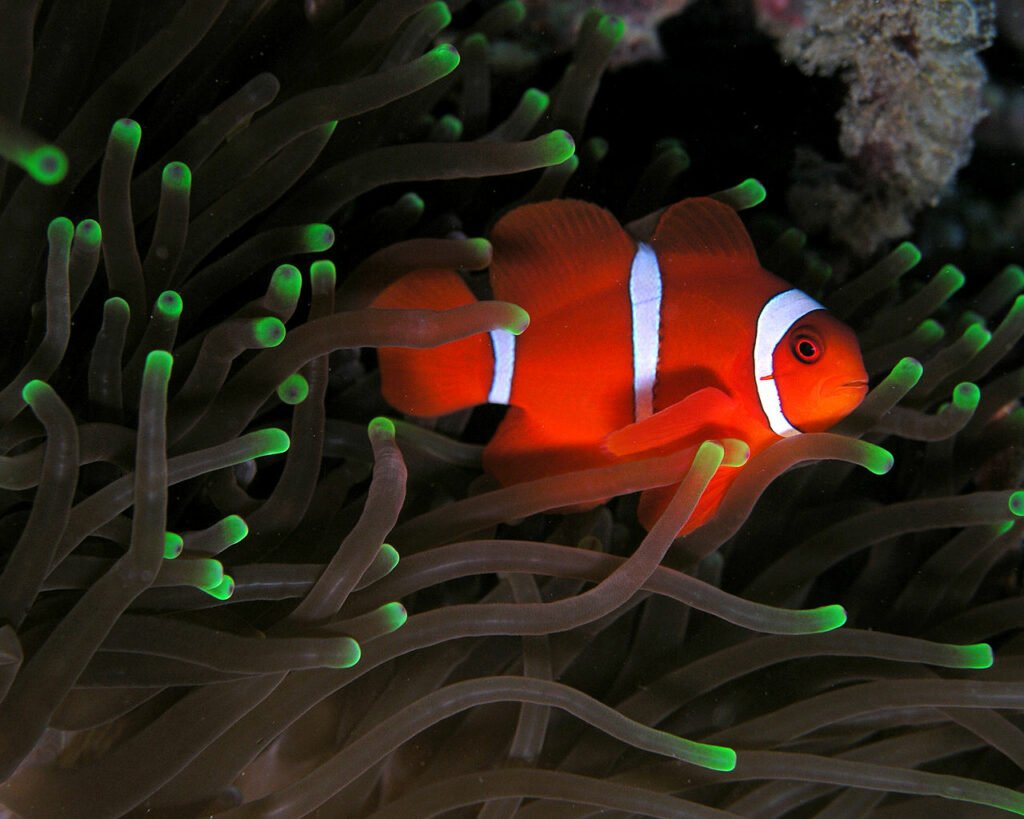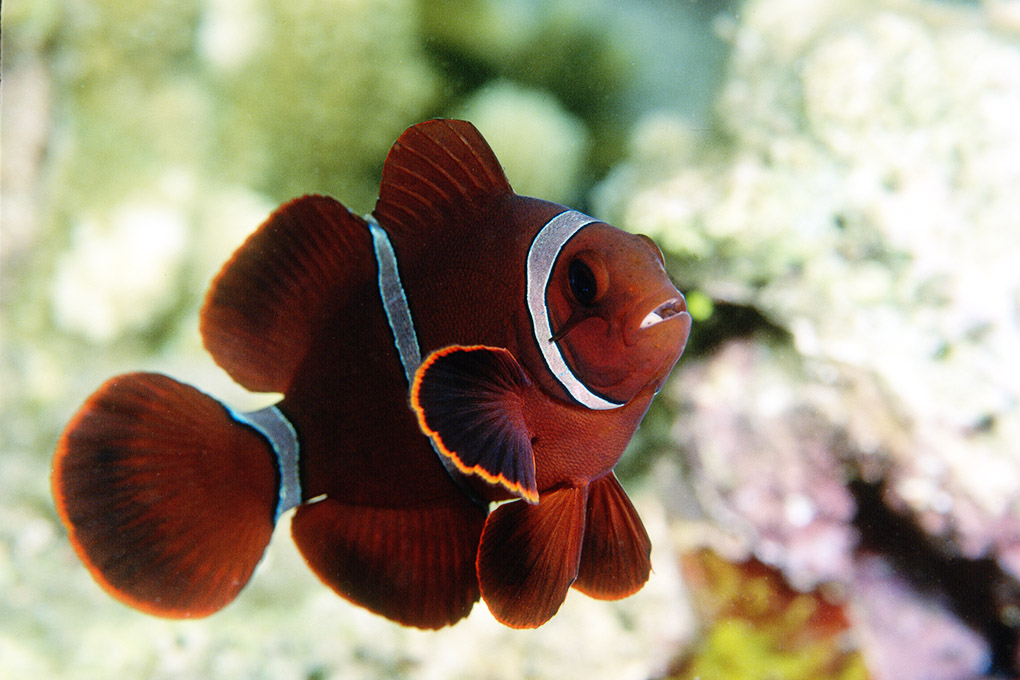
“No longer shall we know our Maroon Clownfish as Premnas biaculeatus; the species is now, at least for the moment, re-christened Amphiprion biaculeatus….”
After 205 years, a Maroon Clownfish by any other name is still an anemonefish like no other…
A recent, expansive phylogenetic analysis of the damselfishes creates new genera and relegates others to the dustbin. The study, Systematics of Damselfishes, was authored by Kevin L. Tang (Associate Professor of Biology, University of Michigan-Flint), Melanie L. J. Stiassny (Axelrod Research Curator of Ichthyology at the American Museum of Natural History), Richard L. Mayden (Professor; W. S. Barnickle Endowed Chair of Natural Sciences, St. Louis University), and Robert DeSalle (Curator, Molecular Systematics at the American Museum of Natural History). It was published as an open-access article on May 5, 2021, in the journal Ichthyology & Herpetology.
One of the most notable changes: Premnas, the monotypic genus containing the charismatic Maroon Clownfish or Spinecheek Anemonefish, has finally fallen by the wayside. No longer shall we know our Maroon Clownfishes as Premnas biaculeatus; they are now, for the moment, all considered Amphiprion biaculeatus.
The pivotal text? “Based on the relationships presented herein, as well as the overwhelming consensus from past studies, we treat Premnas as a junior synonym of Amphiprion. Both genera are masculine in gender, so the species name remains unchanged in the new combination as Amphiprion biaculeatus.”

Researcher Reactions
“I’m happy to see the change,” wrote zoologist Dr. Ben Titus, an authority on sea anemones and their clownfish symbionts. He continued to explain, “The most recent phylogenies show that biaculeatus, ocellaris, and percula form a small clade sister to the rest of the clownfishes. With the old taxonomy that makes Amphiprion a paraphyletic genus. If one of the primary goals of taxonomy and systematics is to circumscribe groups, then this is an important change.”
CORAL Editor Matt Pedersen found himself wondering, “What makes this particular research paper the definitive ‘end’ to Premnas?”
The paper itself cites many different sources that effectively waffle back and forth over the validity of the genus. for years. He put the question to reef fish taxonomist Yi-Kai Tea, “Why is this the paper that gets to abolish Premnas for good?”
“It’s not,” responded Tea in a rather surprising response. He explained, “But it is the most comprehensive revision at the family level, with the largest molecular dataset yet. So, if anything, this is about as formal as it gets.”
But could the genus Premnas ever be resurrected? Is there anything else that could come back and refute the genus move, or are we going to see this change adopted and endorsed by the scientific community as a whole?

“It’s not likely,” continued Tea. “Premnas has been refuted for ages. The justification for Premnas is based on a single character—the cheek spine.” (Editor: For this reason, the species is also sometimes dubbed the Spinecheek Anemonefish.)
“But, overwhelmingly, [Premnas] is nested in Amphiprion; DNA studies support this. So the cheek-spine character is just a derived trait unique to Amphiprion biaculeatus. We call that an autapomorphy. [It’s a physical, morphological characteristic that] doesn’t reflect relationships.”
So that settles it, for now! RIP Premnas: 1816-2021. You had a good run.





Trackbacks/Pingbacks